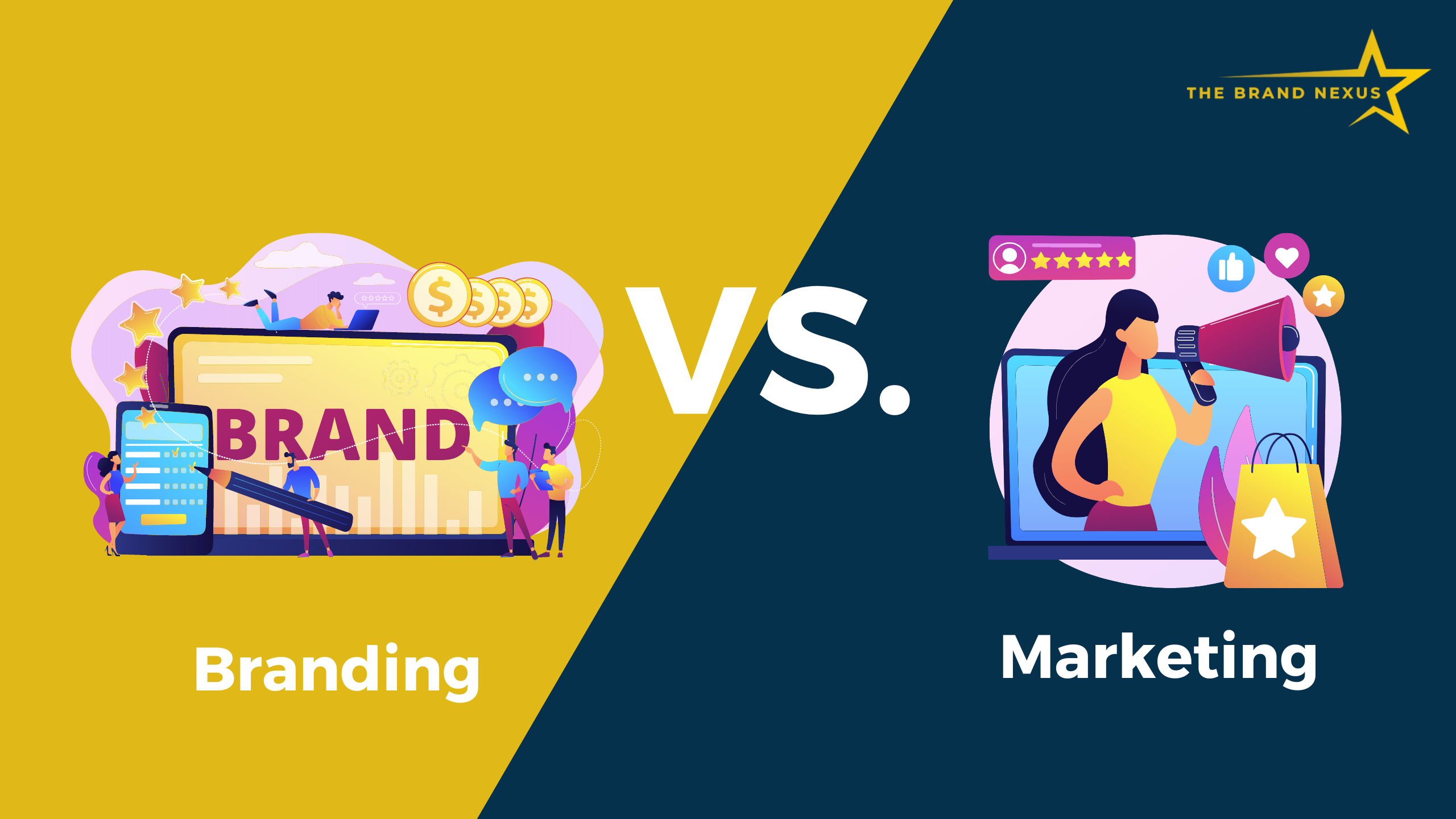In the world of business, marketing and branding are two essential pillars that can significantly impact a company’s success. While they are often used interchangeably, it is crucial to recognize that marketing and branding represent distinct aspects of a company’s overall strategy. In this blog, we will delve into the fundamental differences between marketing and branding, shedding light on their unique roles and contributions to a business’s growth.
- Defining Marketing
Marketing encompasses a broad range of activities focused on promoting a company’s products or services to the target audience. Its primary goal is to drive sales and generate revenue. Marketing strategies typically revolve around attracting potential customers, converting leads, and retaining existing customers. Some common marketing techniques include advertising, direct marketing, social media campaigns, content marketing, and search engine optimization (SEO). Essentially, marketing is the tactical implementation of activities designed to boost short-term sales and revenue.
- Understanding Branding
On the other hand, branding is a more long-term, strategic concept that goes beyond promoting products or services. Branding is about establishing a company’s identity, values, and unique positioning in the minds of consumers. It creates an emotional connection and builds loyalty, trust, and credibility. A well-developed brand communicates what the company stands for, what sets it apart from competitors, and how it seeks to enrich its customers’ lives. Branding is more concerned with shaping perceptions and building a strong reputation, rather than directly driving sales.
- Timeframes and Goals
One of the key distinctions between marketing and branding is their timeframes and primary objectives. Marketing campaigns are often short-term and aim to boost immediate sales and conversions. Branding, however, operates on a much longer timescale, as it aims to create lasting impressions and associations in consumers’ minds. While marketing seeks to drive transactions, branding focuses on building relationships and customer loyalty.
- Focus on Tangible vs. Intangible
Marketing deals with tangible products or services and their features, benefits, and promotions. It aims to showcase how a product can solve customers’ problems or meet their needs. Branding, in contrast, deals with the intangible aspects of a company, such as its values, culture, and personality. It aims to create a memorable and meaningful experience for customers, fostering an emotional connection that goes beyond the product itself.
- Integration and Alignment
Though marketing and branding are distinct, they are closely interconnected. A successful marketing campaign is most effective when it aligns with the brand’s core values and messaging. The brand serves as the foundation on which marketing campaigns are built. Similarly, branding efforts are strengthened by consistent and impactful marketing strategies that reinforce the brand’s image in consumers’ minds.
Conclusion
In summary, marketing and branding are both essential components of a successful business strategy, but they play different roles in achieving overall business objectives. Marketing focuses on driving short-term sales and transactions through tactical promotional activities, while branding is a long-term, strategic effort to establish a company’s identity, values, and unique positioning. To build a strong and enduring brand, businesses must integrate marketing efforts that align with their brand identity, creating a powerful and cohesive customer experience that fosters loyalty and trust. By understanding the differences between marketing and branding, businesses can optimize their strategies and drive sustainable growth in the competitive market landscape.

